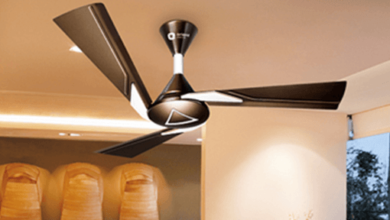Understanding Ceiling Fan Directions: How to Optimize Energy Efficiency and Comfort

Welcome to our blog post, where we are about to unravel the secret behind ceiling fan directions! Are you tired of constantly adjusting your thermostat and paying hefty energy bills? Well, look no further as we dive deep into the world of ceiling fans and how they can help optimize both energy efficiency and comfort in your home. Stay tuned because by the end of this article, you’ll be a ceiling fan pro, ready to breeze through any temperature changes with ease!
Ceiling Fan Direction Basics
Ceiling fans are one of the most common fixtures in a home, but many people don’t realize how to optimize their fan direction for energy efficiency and comfort. Understanding Ceiling Fan Directions explains how to choose the best direction for a ceiling fan depending on your individual needs.
The three basic directions you can choose for a ceiling fan are down, forward, and backward. Down fan direction is ideal for cooling your body using ambient air; forward fan direction helps circulate air throughout the room, while backward fan direction pushes air away from you. However, there are other factors that should be considered when choosing a direction for your ceiling fan such as the size of your room, the type of window or door you have open, and your personal preferences.
If you’re unsure which direction to choose, try testing out each option to see which is best for you. For example, if you have a large room that’s mostly open on one side, try running your fan backward to increase airflow on that side. If you live in an area with high humidity, run your fan backward to help reduce the amount of moisture circulating in the room.
Choosing the Right Direction for Your Ceiling
Minka Aire ceiling fans can be a great way to improve your overall energy efficiency and comfort. Choosing the right direction for your ceiling fan is important to optimize both of these benefits.
To choose the right direction for your ceiling fan, think about where you want the airflow to go. If you want the wind to blow towards a specific area, put the fan in that direction. But if you just want air circulation throughout the room, put it in an upward or downward motion. Fans with oscillation can also move from side to side or up and down.
When choosing a ceiling fan, be sure to factor in your space’s height and width. Fans with a Remote Control feature may have shorter blades on one side that can reach lower ceilings than those without a Remote Control feature. And remember that taller people will need fans higher off the ground than shorter people so that air flowing over their heads is maximized. Keep in mind what type of light you want to use in your room – recessed lights mean less direct airflow from a fan, while up lighting may cause temperatures inside an enclosed room to rise due to heat loss through walls and windows.[1]
Optimizing Energy Efficiency and Comfort with Ceiling Fans
When people think of ceiling fans, they may not associate them with comfort. However, when used correctly, ceiling fans can be very effective in optimizing the energy efficiency and comfort of a room. The following tips will help you use a ceiling fan to its full potential:
1. Know Your Ceiling Fan Direction: Before turning on your ceiling fan, first determine which direction the blade will be moving. This is typically determined by looking at the motor or blades. If you are unsure what direction the blades will be moving in, flip the switch to the “off”” position and then turn it to the desired direction. You should also check whether your fan has adjustable blades; if not, make sure that they are close to the same height so that they move air equally in all directions.
2. Use Ceiling Fans Directly Over an Area That Requires Breathing: Fans that move air downward tend to circulate more efficiently than those that move air upward because heated air rises faster than cooled air does. Rather than covering an entire room with a large fan, try installing one or two fans directly over areas where you need breathable air (such as workstations or bedrooms). The fewer fans there are in a room, the less power they require and the greater their impact on cooling/heating costs.
3. Keep Children and pets out of reach: Kids love to scoot under desks and pull down blinds just to get a glimpse of what’s going on outside!
Conclusion
Whether you’re looking to save energy or just want to improve your home’s comfort, understanding how to optimize your ceiling fan direction is key. By taking note of the three principles of air movement – pressure, ventilation, and humidity – you can figure out which way will best suit your needs. In addition to improving both energy efficiency and comfort, knowing how to optimize their heads makes fans easier to operate by reducing the chances of clogged impellers.




